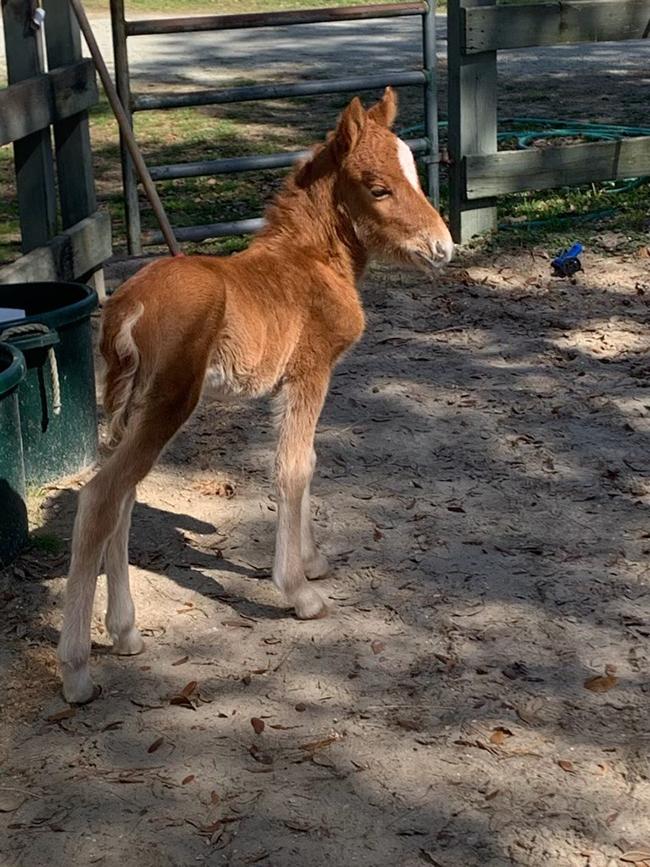
A newborn foal now residing with the Foundation for Shackleford Horses, Cape Lookout National Seashore
On March 26, 2022, a group of visitors on Shackleford Banks encountered a newborn foal in the Wade Shore area. The foal followed the group for about two hours; there were no other horses present during the time the foal followed them. A stallion, when it is trying to protect its group of mares, might drive them away from a location where a foal is sleeping then keep a mare from going back to get her foal because he does not want to lose her. In this case, the foal might lose contact with its harem. When the visitors moved to their boat to leave the island the foal tried to follow them. With the best of intentions, thinking that the foal would drown, they lifted the foal into the boat and departed, thereby removing the horse from its natural habitat, its mother, and the herd.
Once a foal has been removed from the seashore, it is unlikely that the park can reunite it with its dam (mother). Although these visitors thought that they were doing the right thing, this foal can’t be returned to Shackleford Banks and will now live a life as a domesticated animal, rather than as a wild stallion. The foal is currently in the care of the Foundation for Shackleford Horses.
Dr. Sue Stuska, the park’s Wildlife Biologist explains: “For a short period early in a foal’s life, it instinctively follows its dam without necessarily knowing which creature she is. When separated, the foal will follow other horses or even people.”
Another common misconception is when people mistake horses sleeping on their sides as injured or dead, but foals often sleep on their sides, nearly motionless, for hours. This is especially true if other horses are nearby. Anyone observing at a distance should look for the flick of an ear or tail or watch for the rise and fall of the ribcage. Visitors should not approach closer than 50-feet to any wildlife in the park.
As a result of their actions, the visitors have been cited for removing the horse from Shackleford Banks and the park is working with this group to assist with future educational opportunities and community service projects that will benefit Shackleford Banks, and the horses protected there.
March is the beginning of foaling season on Shackleford Banks, a part of Cape Lookout National Seashore which along with its wildlife, is federally protected. Visitors observing strange animal behaviors may call the park visitor center (the phone number is on the brown information signs on the island) or 911 to report to park staff. Anything urgent, serious, or potentially life threatening to the visitor, or the wildlife should immediately be called in to 911 which will then dispatch park resources to the site.



Comments
The utter stupidity of these people never ceases to amaze. And yeah, we all know about good intentions.
In too many ways, urbanization has created such a deficit when it comes to common sense in the outdoors.